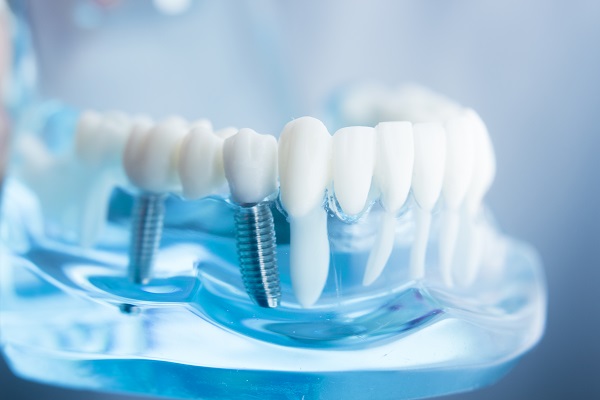Dental Implant Restoration Parts: Post, Abutment and Replacement Tooth

Dental implants. The implant goes directly into the jaw and it fuses with bone tissues around it. It serves as a base for restorations like crowns or dentures.
Dental implants are one of the popular ways to replace missing teeth due to their bone preserving properties and their longevity. They can last an entire lifetime with good oral hygiene and they do not require any form of specialized cleaning.
The different components of a dental implant
The standard dental implant has three main components: the post, abutment, and the replacement tooth. The actual dental implant is the first part that is inserted into the patient's jaw and it replaces the root of the lost tooth. The dental implant transfers bite forces down to the jaw when the patient bites down on something, keeping the tissues there stimulated. Let us take a closer look at the components that make up implants and their uses.
The implant post
These are artificial teeth roots that are typically made of titanium. This is the strongest metal on the planet and it can withstand the bite forces created when chewing. Dental implants can also be made from other materials like zirconia.
The installation of an implant post requires minor oral surgery, so patients need to have good overall health. Health conditions like immune system disorders and diabetes can make it harder to recover after the installation of an implant. Additionally, habits like smoking or drinking regularly can make individuals ineligible for the procedure.
Dental implants are surgically inserted into the jaw, which means the patient needs to have adequate amounts of bone tissues in their jaw to hold the restoration. Bone grafts can be used to thicken the jawbone tissues of those who lack the needed bone tissues.
2. Abutments
Abutments are used to attach restorations like crowns to dental implants. Implants are usually fitted with a protective cap after their installation. The patient then waits for osseointegration to take place over the next six months. This allows the implant to heal undisturbed while maintaining the form it needs to hold a crown. Once the dental implant is fused with bone tissues around it, the healing cap is removed and an abutment is attached to the dental implant.
3. Artificial teeth
Once an abutment has been attached to the dental implant, the general dentist will design the patient's artificial tooth. An impression of the area is sent to a lab that makes crowns for implants. The process takes about two weeks, depending on the number of dental crowns and the complexity of the tooth being replaced. The dentist then attaches the crown to the abutment, completing the treatment. Other restorations like bridges and dentures can also be attached to dental implants depending on the patient's needs.
Explore dental implants
Dealing with a missing tooth? Call or visit our Marietta practice to set up a consultation with our dentist.
Request an appointment here: https://www.mytotaldentistry.com or call McCarthy Dentistry at (740) 546-5178 for an appointment in our Marietta office.
Check out what others are saying about our dental services on Yelp: Dental Implants in Marietta, OH.
Recent Posts
Though implant crowns and traditional dental crowns look almost identical, they serve different purposes. Implant crowns are key to tooth replacement involving dental implants, while traditional ones primarily reinforce and repair natural teeth. Understanding the differences between these options can help patients make informed decisions regarding restoring their smile.Implant crowns are attached to a dental…
Dental implants provide a long-term solution for missing teeth, offering a natural appearance and feel that supports both oral health and confidence. However, many patients also consider dentures, which offer a more traditional approach to tooth replacement. Understanding the key differences between these two options can help determine which treatment may be best suited for…
You may have heard a lot about dental implants and how they can change your smile and appearance. Implants have many benefits and offer advantages that other tooth-replacement treatments cannot match. You can expect improved health and wellness when you have implants, as well. One of the most significant differences you will see is in…
The surgical procedure to place dental implants is similar to all others in that you need some time to recover from the operation. Implants require incisions, so the soft tissues will need to heal to seal up the wounds. In addition, the hard tissues of the jaw bone will also heal slowly, fusing the metal…


